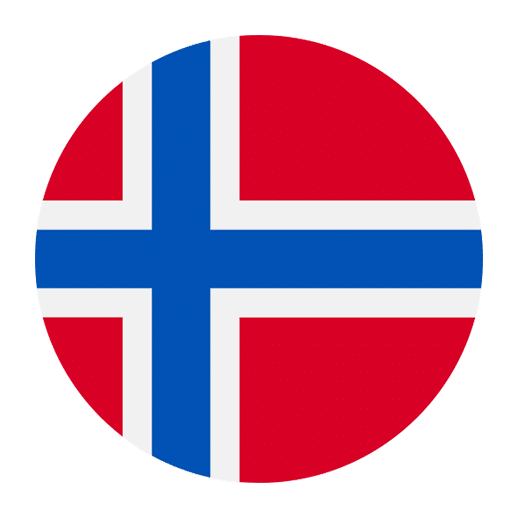Norwegian, a North Germanic language spoken primarily in Norway, is a rich tapestry of sounds, culture, and history. One of the most enjoyable aspects of learning Norwegian is delving into the language used around various festivities and special occasions. As in many cultures, these terms often carry deep cultural significance and can offer unique insights into Norwegian customs and traditions. Let’s explore some of the most important festive and occasion-related terms in Norwegian.
Christmas and New Year
Christmas, or Jul, is one of the most important holidays in Norway, imbued with various traditions and a host of specialized vocabulary.
Jul: Christmas. This term is central to the holiday season and is used extensively in greetings and songs.
God jul: Merry Christmas. This is the standard way to wish someone a happy holiday.
Advent: The period leading up to Christmas, marked by Advent candles and calendars.
Julaften: Christmas Eve. This is when the main Christmas celebrations and gift-giving occur.
Juletre: Christmas tree. Decorating the tree is a cherished tradition.
Julebord: Christmas party or Christmas table. These are festive gatherings typically held by workplaces or social groups in the weeks leading up to Christmas.
Ribbe: Traditional Norwegian Christmas rib, often served during Christmas dinner.
Romjul: The period between Christmas and New Year’s Eve.
Nyttårsaften: New Year’s Eve. Celebrations often include fireworks and parties.
Godt nytt år: Happy New Year. This is the greeting exchanged as the calendar turns to January 1st.
Easter
Easter, or Påske, is another significant celebration in Norway, often associated with skiing and spending time in the mountains.
Påske: Easter. This term encompasses all the festivities related to the Easter holiday.
Påskeegg: Easter egg. These are often filled with chocolates and candies.
Påskefjell: Easter mountain. Many Norwegians head to the mountains for skiing during Easter.
Påskekrim: Easter crime. A unique Norwegian tradition where people read crime novels or watch crime dramas during Easter.
Skjærtorsdag: Maundy Thursday. A public holiday in Norway, marking the beginning of the Easter weekend.
Langfredag: Good Friday. Another public holiday, commemorating the crucifixion of Jesus Christ.
Påskeaften: Easter Eve. The Saturday before Easter Sunday, often a day of preparation and relaxation.
Påskedag: Easter Sunday. The main day of celebration, marking the resurrection of Jesus.
Norwegian Constitution Day
May 17th, known as Grunnlovsdagen or Constitution Day, is perhaps the most festive national holiday in Norway.
Grunnlovsdagen: Constitution Day. This term refers to the celebration of Norway’s constitution, signed in 1814.
Hurra!: Hooray! A common exclamation during the Constitution Day parades.
Bunad: Traditional Norwegian costume. Many people wear these elaborate outfits during the celebrations.
Barnetog: Children’s parade. A key feature of Constitution Day, where children march through the streets waving Norwegian flags.
Iskrem: Ice cream. A popular treat enjoyed during the celebrations.
Rømmegrøt: Sour cream porridge. A traditional dish often eaten on Constitution Day.
Weddings
Weddings in Norway, or bryllup, come with their own set of traditions and vocabulary.
Bryllup: Wedding. This term encompasses all aspects of a wedding celebration.
Brud: Bride. The woman who is getting married.
Brudgom: Groom. The man who is getting married.
Forlover: Best man or maid of honor. The person chosen to support the bride or groom during the wedding.
Vielse: Ceremony. The official part of the wedding where vows are exchanged.
Brudekjole: Wedding dress. The bride’s attire for the wedding.
Bryllupsfest: Wedding party or reception. The celebration following the ceremony.
Bryllupsreise: Honeymoon. The vacation taken by the newlyweds after the wedding.
Birthdays
Birthdays, or bursdager, are celebrated with joy and enthusiasm in Norway.
Bursdag: Birthday. The term used to describe the anniversary of someone’s birth.
Gratulerer med dagen: Happy birthday. The standard birthday greeting.
Bursdagskake: Birthday cake. A cake made to celebrate someone’s birthday.
Bursdagsfest: Birthday party. A gathering to celebrate a birthday.
Gave: Gift or present. An item given to someone on their birthday.
Other Celebrations
Norwegians also celebrate various other events and occasions, each with its own unique vocabulary.
Navnedag: Name day. A day celebrating people who have a particular name.
Konfirmasjon: Confirmation. A rite of passage for teenagers, often celebrated with a party and gifts.
Julenisse: Santa Claus. The Norwegian version of the figure who brings gifts to children at Christmas.
Fastelavn: Shrovetide. A carnival-like celebration before the fasting period of Lent, often involving the baking of special buns called fastelavnsboller.
Sankthansaften: Midsummer Eve. Celebrated on June 23rd, it’s a time for bonfires and outdoor festivities.
Farsdag: Father’s Day. Celebrated on the second Sunday of November.
Morsdag: Mother’s Day. Celebrated on the second Sunday of February.
Understanding Cultural Context
Learning festive and occasion-related terms is not just about expanding your vocabulary; it’s also about understanding the cultural context in which these terms are used. For example, knowing that Påskekrim is a beloved tradition can help you understand why bookstores and TV channels feature crime stories prominently during Easter. Similarly, recognizing the significance of Grunnlovsdagen can give you a deeper appreciation for Norwegian national pride and history.
Practical Tips for Learning
1. **Immerse Yourself**: Try to experience these holidays and occasions firsthand if possible. Participate in local celebrations, watch Norwegian TV programs about these events, or even read Norwegian books that describe these traditions.
2. **Use Multimedia Resources**: Watch Norwegian films, listen to Norwegian music, or follow Norwegian social media accounts that highlight these festive occasions. This will help you hear how these terms are used in context.
3. **Practice with Native Speakers**: Engage in conversations with native Norwegian speakers about these celebrations. Ask them about their favorite traditions and how they celebrate different holidays.
4. **Flashcards and Apps**: Use flashcards or language learning apps to memorize these terms. Visual aids can be especially helpful in retaining new vocabulary.
5. **Create Your Own Traditions**: Incorporate some of these Norwegian traditions into your own celebrations. This not only makes learning fun but also deepens your connection to the language and culture.
Conclusion
Festive and occasion-related terms in Norwegian offer a window into the rich cultural tapestry of Norway. By learning these terms, you not only expand your vocabulary but also gain a deeper understanding of Norwegian traditions and celebrations. Whether it’s enjoying a julebord during Christmas, participating in a barnetog on Constitution Day, or savoring a fastelavnsbolle during Shrovetide, these terms will enrich your language learning journey and bring you closer to the heart of Norwegian culture.

